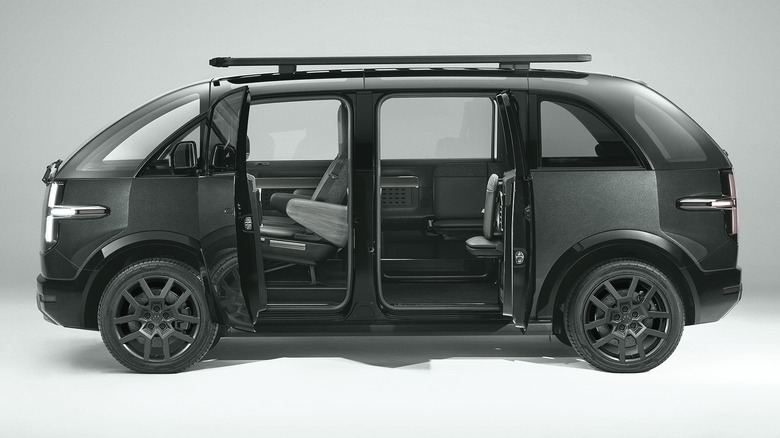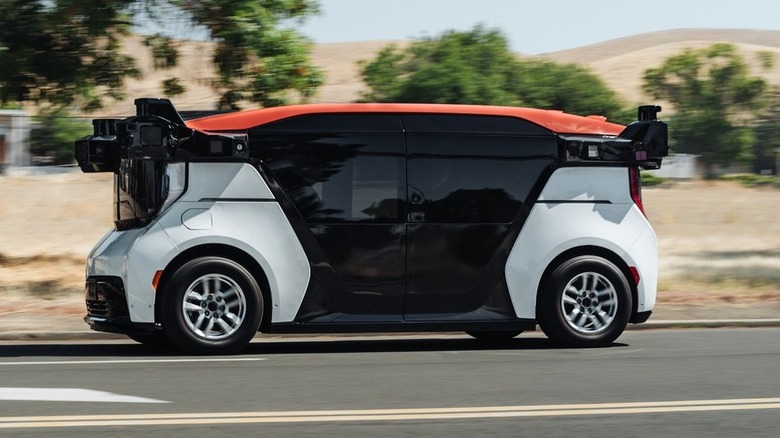Apple's Canceled Electric Car Project Wasn't Playing Safe With Design
Apple's reported cancellation of its electric car project has been met with mixed reception in the industry, with some fans expressing disappointment over what could've been. Elon Musk, chief of Tesla, quipped that "the natural state of a car company is dead." But it appears that Apple's planned EV underwent multiple ambitious design changes, one that aimed at blending retrofuturistic looks with functional modernity. According to Bloomberg, one of the proposals was inspired by the Canoo Lifestyle cargo minivan, with an all-white exterior, glass sunroof, and black windows with an adjustable tint. The latter is not exactly a novel innovation, as it has appeared on everything from concept phones to the cool new McLaren Artura Spider.
Another interesting touch was that the car offered an identical front and rear profile. Back in 2020, Amazon-owned Zoox also revealed its self-driving robotaxi with a standout bi-directional movement system. Technically, it forfeits the concept of front or rear seating. The Cruise Origin, whose fate currently hangs by a thin thread, is another robotaxi that favors bidirectional ride engineering with looks to match.
But the most ambitious aspect of Apple's EV was a Level 5 self-driving system. According to SAE, Level 5 autonomy means no input is required from the person in the driver's seat and the car can move around in all environments on its own. For perspective, Tesla's advanced driver assistance system (ADAS) sits at Level 2, while Mercedes-Benz's Drive Pilot tech has been certified for Level 3, tagging alongside a bunch of practical concerns.
A beautiful dream
"It looked like no other mass-produced vehicle," claims the Bloomberg report. The four-person ride envisioned seats with regular, footrest, and recliner modes, while a large TV was there for FaceTime calls. The idea of versatile seats, while promising, was still not as ambitious as Volvo 360c, which went as far as fitting seats that could be turned into a bed like a first-class flight cabin.
Instead of front-facing vents, Apple reportedly developed an air conditioning system that used the sides of the cabin for airflow. Again, it was not an original idea in its entirety, as the 2003 Volkswagen Phaeton also employed "diffused, indirect ventilation" with vents on the B pillar and the upper dash panel.
Another iteration of the Apple car, which is said to be the brainchild of design veteran Jony Ive, drew inspiration from a 1950s Volkswagen bus. A subsequent refinement was "nearly identical" to the 2017 Volkswagen ID Buzz concept. Notably, this design was showcased internally way ahead of Volkswagen's electric minivan in 2010. Another version chased a more dramatic wedge-inspired look for the front, but it was the Canoo-like version that came closest to becoming a reality.
In fact, after a track demonstration, Apple chief Tim Cook reportedly "committed to push headlong into development" in 2020. Over time, some major design changes were made. The sliding doors were replaced with gull-wing units pioneered by Mercedes-Benz. As the autonomy targets dropped from Level 5 to Level 2, steering wheels and pedals were added alongside swiveling seats a la Mercedes' futuristic F 015 self-driving car.

